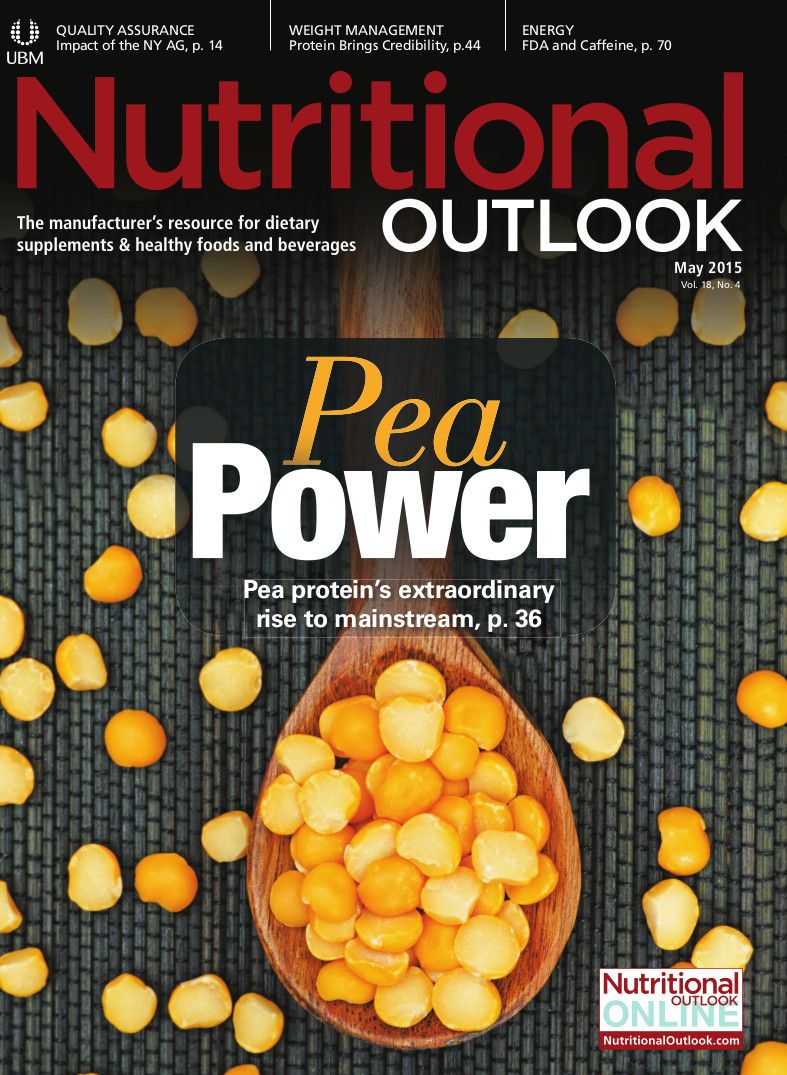How the Healthcare Professional Evaluates Dietary Supplements
Sorting through the fads and pitches

By Dave Foreman, RPh, ND
As a healthcare provider, it’s of course imperative to do my homework on what supplements to use and recommend. Back in the early 1990s when I began to integrate natural products in my pharmacy, I undertook the task of selecting quality products for my patients and for personal use-a responsibility not to be taken lightly. Even though I retired from being a traditional pharmacist, I still utilize the same criteria in selecting the natural medicines I recommend on television and radio programs. Recommending products that are truly efficacious and safe is even more important these days, as I have gone from reaching hundreds of people to reaching millions of people.
Having been in radio for over 16 years and television for another 10, I now get bombarded with solicitations. Companies either want me to mention or put my seal of approval on their products and services. Even in the days of owning my pharmacy, I would get solicited by network marketers, upstart companies, etc., to sell or mention their products. They wanted to be able to say “pharmacist recommended,” which holds a lot of credibility to the end consumer.
Of course, it would be much easier to just accept the marketing stories these companies tell me or to listen to a sales pitch and come away with the conclusion that the product is great, but in the end, protecting my credibility and a person’s health is more important than helping someone sell more product. As such, it takes time and due diligence before I will get behind anything. Just because you-seller or marketer-say that something is good for me doesn’t mean it is. When someone’s health is on the line, fancy marketing, websites, and skyrocketing sales aren’t enough to convince me to jump on the bandwagon. Instead, here are some of the red flags I look for before I even begin to dig:
1. Is the company following proper FDA/FTC guidelines regarding structure/function claims and advertising?
This is one of the biggest barometers of credibility in my book. If a company is making outrageous claims like “eat more, exercise less, and still lose the weight” or “stops cancer in its tracks” or “works better than XYZ drug,” it shows me they don’t know the law and are most likely “cheating” somewhere else.
2. Does the product’s Supplement Facts panel list simply “proprietary blends,” or does it list the actual amounts of each ingredient in the product?
Labeling is key, even on the side or back of a package. Following guidelines in labeling makes a bigger impression on me than product names and structure/function claims. Also, to me, the words proprietary blend beg caution. How much did you really use?
3. Is the company using therapeutic amounts of key ingredients, or is it just “pixie dusting”?
Too many times, I see a label listing only a miniscule amount of an ingredient contained in a serving. This is an old trick used to fool or confuse consumers who may know that selenium is good for them but who don’t know how much selenium is good. One of my favorite examples is eye health products that contain only a whiff of lutein (sub-therapeutic dosing based on research), yet boast about lutein content on the front label. The consumer is led to believe there is ample lutein within the product for their eye health, but may not realize the dosing is sub-therapeutic.
4. Does the company cite science or historical use in its literature, and how do they do it?
Granted, historical use can go a long way, but this is still an area that warrants a red flag. If you are unaware of the actual historical use, then you need to do the research. Find out how the supplement was historically made, what plant parts were used, how often people used it, etc. One of my favorite examples today is soy. Soy has long been sold for numerous disease-state prevention programs. It is sold in all forms-milk, beans, supplements, tofu, etc. As substantiation, some marketers refer to the historical fact that certain cultures that consumed soy as part of their daily diet had less incidence of certain diseases. What these marketers fail to mention, however, is that in those cultures, soy was consumed as fermented soy and not in all of the other ways soy is sold and consumed today. Show me the science that soymilk will decrease my risk of developing cancer, and maybe I will consider it-but it’s more likely that you need a history lesson or a lesson on regulatory claims.
On the Flip Side…
What about negative press? How does negative coverage in the popular press inform or influence my decisions? Simply put, look beyond the headlines.
My favorite example is the negative press circulating a few years ago stemming from a negative study about St. John’s wort being ineffective at helping those with depression. The media jumped all over the information in this study, and thousands of people stopped using the herb-and even, in some cases, decided that “natural medicine” wasn’t worth it. Taking a close look at the study, there were numerous important facts left out of the information sent to the media. The biggest omission to me-and what should have been the easiest for reporters to debunk-was that the patient group involved had severe depression. The science on St. John’s wort indicates that St. John’s wort is only effective in people with mild to moderate or seasonal depression, not those with severe depression.
I never take the original headline at its word. I always want to know things like 1) Did they use the proper dose? 2) Did they use the right type of patient? 3) Who funded the study? 4) Were there any financial interests that would have influenced the results? Again, just because someone says something is or isn’t good for you doesn’t mean that should be gospel.
Besides the quick red flags mentioned, here is the evaluating approach that I take that has worked for me for several decades.
Look for Branded Ingredients
My experience is that patented or branded ingredients will have studies performed on the ingredient. These studies usually examine mechanism of action, dosing requirements, and safety profiles. Branding is done when someone has either a unique ingredient or technology that makes his or her product stand out from the rest. These unique ingredients may start with the same herb as other products, but due to their technology (extraction process, manufacturing techniques, farming, specific species, etc.), the final ingredient is often significantly different and more effective.
Here are some great examples: The ingredient Phase 2 Carb Controller comes from a specific type of white kidney bean. The technology used to make the final ingredient ensures the end product is unique from powdered white kidney beans. Another favorite is Maitake mushroom extract. The only Maitake extract I am aware of is Maitake D-Fraction. I am not willing to take a chance using someone else’s Maitake until they can show me the scientific benefits like D-Fraction has. Carnitine is another great example. Carnipure (the pure L-carnitine versus other salts or DL-carnitine) is branded and has numerous clinical trials showing its benefits; yet, I am unaware of other forms showing the same or similar benefits in studies. Meriva (a curcumin extract) is not just another turmeric extract. The ingredient has studies showing its improved absorption and impact due to it being technologically different. It is examples like these that drive me to look for branded ingredients.
Look for Reference to Third-Party Testing
This is another one of my favorite pieces of advice, since the actual seller of the product is generally not verifying the product-i.e. ingredient(s)-but a third-party laboratory is. NSF International (Ann Arbor, MI) and the United States Pharmacopeia (Rockville, MD) are two popular labs. Each company has a website that lists products that have passed their tests.
Reputation
To many, this may sound strange, but I feel that longevity goes a long way. I feel that if a company has been in business for numerous years, it means that that its products must be working. This doesn’t mean that a new company doesn’t provide satisfactory products, either, but the longevity and reputation someone has adds to the credibility of the end products they produce.
Price
If something seems too cheap, it usually is. Quality ingredients, manufacturing practices, testing, etc., come at a price. This often leads to something costing more. This does not mean that a more expensive product is better. It means that if you have two similar products and one is extremely inexpensive, that would give me a yellow flag of caution when evaluating the purchase. More due diligence is needed in this case.
One last note for the above section: I often look for the studies done on ingredients I am approached with. I prefer human studies with significant p-values. Yes, this may lead to flashbacks of statistics, but it’s well worth the time invested. We are humans, not rats, mice, or any other animal and therefore do not often accept science done in animals.
Lastly, keep in mind that each product and ingredient needs to be evaluated on all of these levels. Making sure you take the proper steps to evaluate a product will go a long way towards achieving the health benefit(s) we are seeking. Your health matters!
Also read:
Doctors and Dietary Supplements: Using, Recommending, Selling
Dave Foreman, RPh, ND, is a pharmacist, author, television commentator, radio host, and practitioner of natural living and holistic approaches to better health. His weekly radio program is broadcast throughout the United States. Visit www.herbalpharmacist.com.
Photo © iStockphoto.com/milosducati

Prinova acquires Aplinova to further increase its footprint in Latin America
April 7th 2025Prinova has recently announced the acquisition of Brazilian ingredients distributor Aplinova, which is a provider of specialty ingredients for a range of market segments that include food, beverage, supplements, and personal care.
























